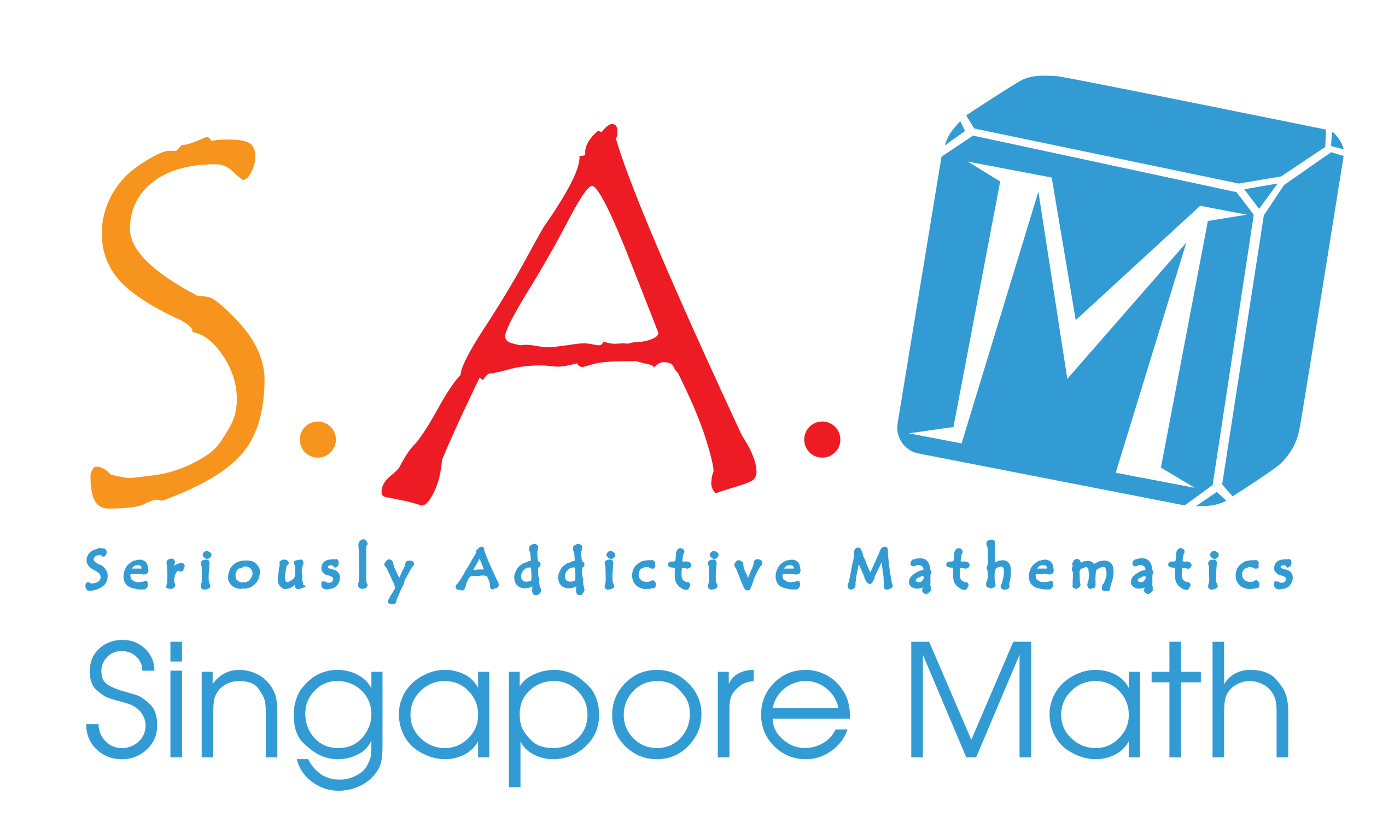Math Tuition vs. Math Enrichment: How to Choose the Best Math Program for Your Child

The world is evolving with advances in technology and artificial intelligence, reshaping the way we live, work, and learn.
In this changing landscape, math education is no longer just about doing calculations quickly—machines can already do that. What’s becoming more important are skills like problem-solving, logical thinking, and the ability to adapt.
As the demands of math learning grow, some children may benefit from additional support beyond school. For parents in search of math classes for kids, two popular options are math tuition and math enrichment. Both can help children progress in math, but they do so in different ways.
So, which is the right program for your child: tuition or enrichment?
In this article, we’ll compare math tuition vs. math enrichment, highlight the key differences and strengths of each, and guide you in choosing the best program to support your child’s learning and long-term development.
What Is Math Tuition?
Math tuition is an academic-focused approach that revisits what students learn in school to help improve academic performance. It closely follows the school syllabus, often using school textbooks, sometimes together with proprietary materials, and typically includes homework help, extra practice, and test preparation.
While this repetition of schoolwork may benefit students who need more time or support to master school topics, others may find it boring, become disengaged, or even develop a dislike for math.
The strong emphasis on exams may help students prepare, but it can also add pressure to an already stressful school workload, potentially worsening math anxiety or leading to burnout.
Math tuition classes often mirror the teaching style used in schools, with a teacher leading students through the material. While this guided approach can be helpful, it may also lead some students to become overly reliant on external help, limiting the development of independent thinking and study skills that are essential for long-term growth.
That said, one-on-one math tutoring sessions can effectively address specific learning needs or provide intensive support for students who are significantly behind.
What Is Math Enrichment?
Math enrichment takes a future-focused approach that supports broader math learning to help improve academic performance. It complements the school syllabus with proprietary materials, focusing on developing essential math skills, thinking abilities, and independent learning.
Rather than revisiting schoolwork, math enrichment classes introduce new content that keeps learning fresh and engaging. It strengthens understanding and builds skills that help students manage homework more effectively and feel more prepared for tests, without relying on direct support.
By placing less emphasis on exams, math enrichment encourages interest and enjoyment in learning. As students develop a more positive experience and attitude toward math, improved results often follow naturally.
Math enrichment emphasizes balanced guidance and self-directed learning, where a teacher supports students through the material with less hand-holding. The best math enrichment programs nurture independent thinking and learning—skills that are key to long-term success and future readiness.
However, because math enrichment is typically delivered in group settings, it may not be suitable for students who require intensive support or have specific learning needs.
Choosing Between Math Tuition and Math Enrichment
As we’ve seen, both math tuition and math enrichment can help improve academic performance, but they offer different paths to supporting your child’s math learning—whether your child needs extra support, consistent reinforcement, or added challenge.
The best choice depends on your child’s current needs, learning style, and long-term goals.
Here’s a side-by-side comparison to help you decide:
| Math Tuition | Math Enrichment | |
|---|---|---|
| Approach | Academic-focused; closely follows the school syllabus with short-term academic goals | Future-focused; complements the school syllabus with long-term, broader goals |
| Emphasis | Strengthens school math knowledge and exam readiness | Builds essential math skills, thinking abilities, and independence |
| Content | Revisits and reinforces school content | Introduces fresh and engaging content |
| Academic Support | Provides direct homework help and test preparation | Develops skills that support homework and test readiness |
| Student Experience | Risk of boredom, math anxiety, or burnout | Encourages interest and a positive attitude toward math |
| Teaching Style | The teacher leads students through the material | The teacher supports students through the material |
| Independence | May become overly reliant on external help | Encourages self-directed learning |
| Support Intensity | Suitable for students needing intensive support | May not cater to students needing intensive support |
| Setting | One-on-one, small group, or larger class | Small group or larger class |
How to Choose the Right Math Center for Your Child
Now that you understand the key differences between math tuition and math enrichment, the next step is choosing the right math center.
Beyond the type of program, math centers can vary in curriculum, class structure, and how well they meet your child’s needs.
Here’s a practical checklist to help you evaluate and compare different math centers—so you can make an informed decision that supports your child’s learning and growth.
1. Teaching Approach and Emphasis
Consider which type of program best fits your child’s needs and goals. Does your child need math tuition that’s focused on homework help and exam preparation for intensive catch-up, or math enrichment that develops broader math skills and critical thinking, promoting deeper understanding and sustained progress?
2. Curriculum and Materials
Look into the curriculum and quality of materials used. How well do they align to or complement the school syllabus? What are the credentials or educational expertise of the team that designed them? The materials should be well-structured and engaging to effectively build skills progressively and thoroughly.
3. Mode of Delivery
Evaluate whether the classes are conducted in-person or online. In-person learning allows for direct teacher interaction, closer guidance, and hands-on activities. Online classes offer convenience and flexibility, but may not suit every child’s attention span or learning needs. It can also contribute to excessive screen time.
4. Class Size and Structure
Evaluate the typical class size—whether it’s one-on-one, small group, or a larger class—and how lessons are conducted: teacher-led, student-led, hands-on, or worksheet-based. Consider the duration—how long can your child stay focused? The structure should suit your child’s learning style and support effective progress.
5. Assessment of Abilities and Gaps
Check if the center assesses your child’s current skill level and identifies learning gaps before placement. This ensures your child starts at a suitable level and can keep up with the pace of lessons, especially important if they’re already struggling in school or have lost confidence in math.
6. Location and Schedule
Consider the convenience of the center’s location and how its schedule fits your family’s routine. Travel time, accessibility, and consistent attendance are important for sustained learning and steady progress.
7. Cost and Commitment
Review the program’s price to see if it fits your family’s budget. Also consider how long the program lasts and how often your child needs to attend. Make sure the time and commitment needed work with your family’s schedule and goals.
Help Your Child Build Thinking Skills and Math Success with S.A.M

At Seriously Addictive Mathematics (S.A.M), we believe every child has the potential to excel in math.
That’s why our program goes beyond procedures and memorization to develop understanding, thinking skills, and independent learning habits—for school success and future readiness.
Trusted by parents and students in over 200 centers across 20 countries, S.A.M is the world’s largest Singapore Math enrichment program, developed by former school teachers and experienced textbook publishers.
S.A.M complements the school syllabus and supports all learners—whether they need reinforcement or enrichment—through a learning process that includes:
- Classroom Engagement: Combining a coaching approach with hands-on activities to build understanding, boost confidence, and foster independence.
- Worksheet Reinforcement: Comprehensive tasks that strengthen concept mastery, build thinking skills, and develop problem-solving through math heuristics, including the bar model method.
With the right support and approach, every child can grow in confidence, enjoy learning, and achieve success in math.
Book a complimentary assessment today and help your child unlock their full potential.
Frequently Asked Questions About Math Tuition and Math Enrichment
Look at the center’s teaching approach, curriculum, and how well it supports your child’s needs, whether for reinforcement or enrichment. Also consider factors such as class size, mode of delivery, and how the program fits your schedule and budget. Proximity and ease of access are important too, since consistent attendance is key to steady progress. |

CONTACT US
© 2025 Seriously Addictive Math. All Rights Reserved.